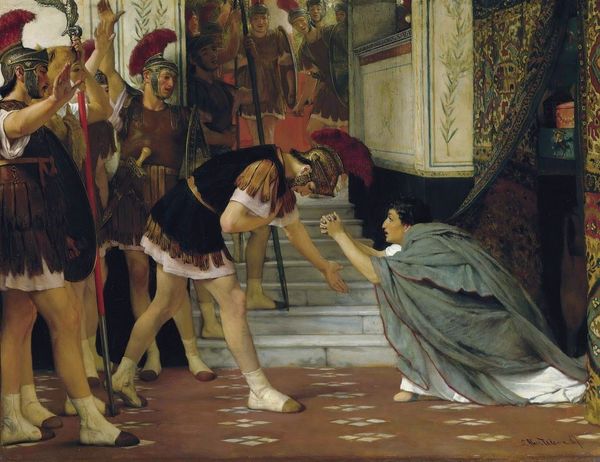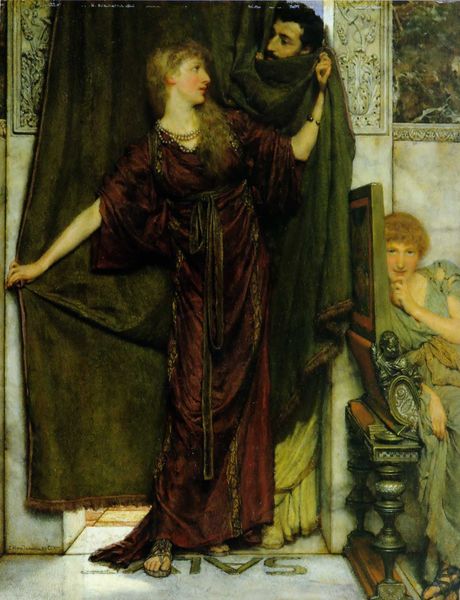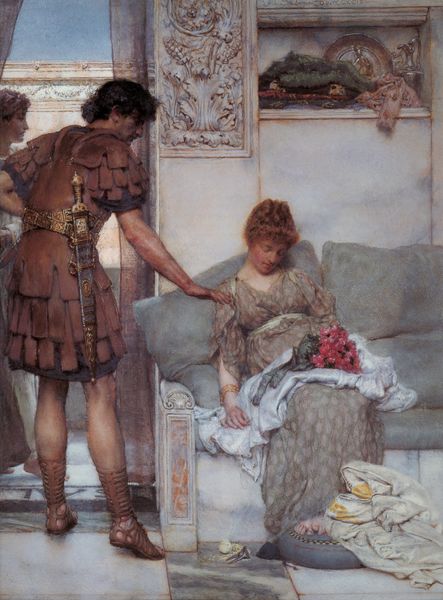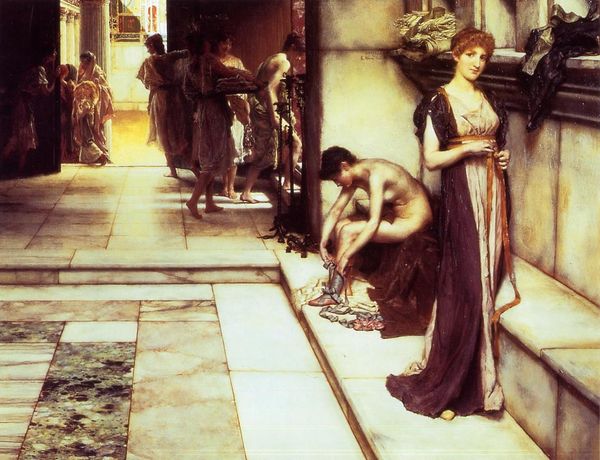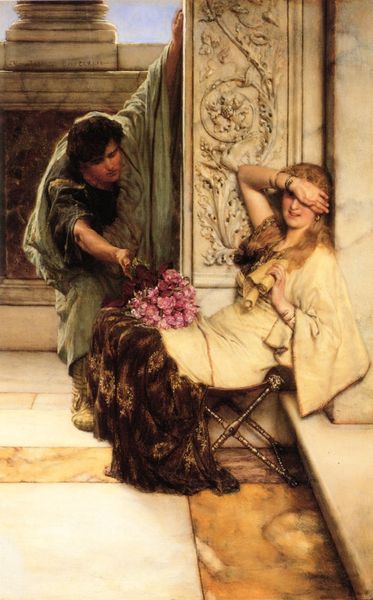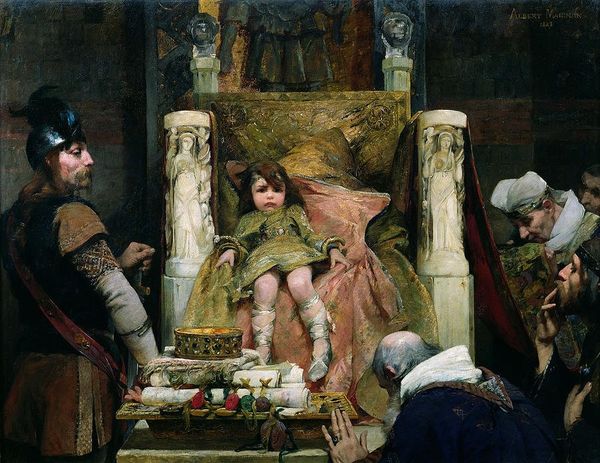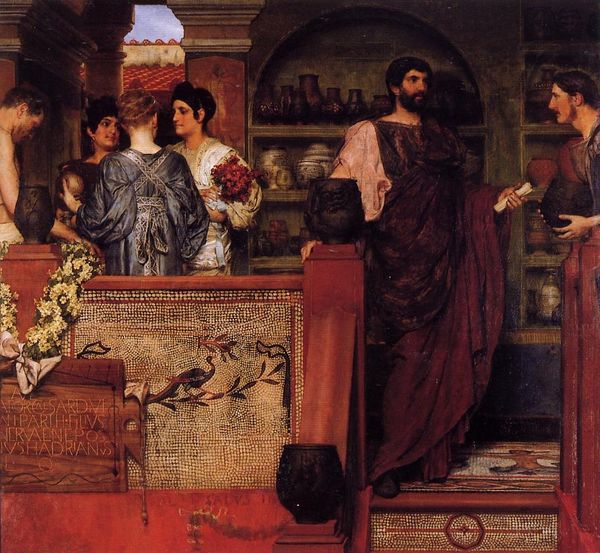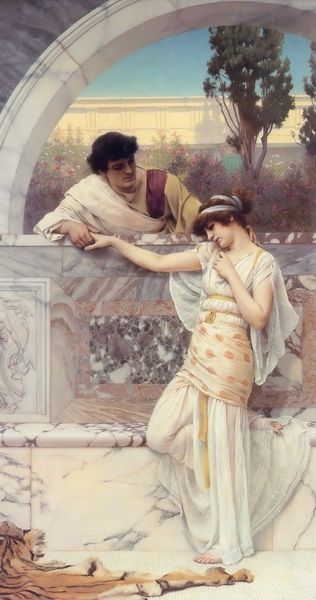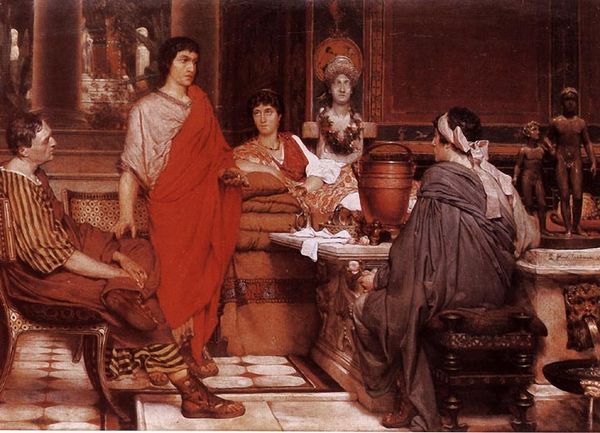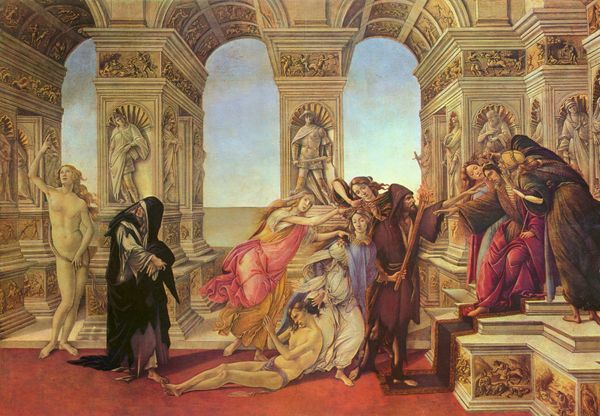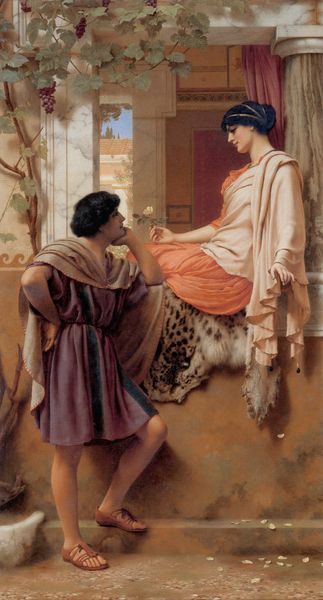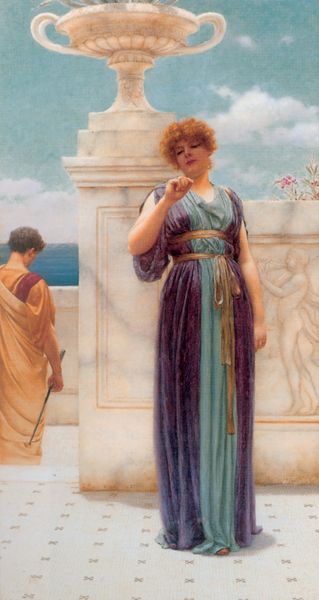
Dimensions: 59.7 x 45.1 cm
Copyright: Public domain
Editor: Alma-Tadema's "The Frigidarium," painted in 1890, offers a glimpse into Roman daily life, rendered in oil. I’m struck by the contrast between the cool marble and the implied warmth of the bath. How would you interpret the symbolism at play here? Curator: Well, think about what a frigidarium was: the last stop in a Roman bathhouse circuit, the cold plunge. The symbols? Not just about hygiene. Water is purification. The marble, often associated with wealth and power, suggests permanence, empire. And the act of bathing? It's both a communal ritual and a deeply personal act of renewal. Editor: So, the cold isn't just about temperature. It’s about societal expectations and status? Curator: Precisely. Note how Alma-Tadema painstakingly recreates fabrics, hairstyles—all visual markers signaling status. He understood that the seemingly mundane details are what anchor us to the past. The women are caught in candid moments. There's a deliberate artifice and, simultaneously, a feeling of intimacy. Don't you think the choice of attire reveals a statement? Editor: Yes, you're right. The different fabrics definitely give a hint. What did he want to tell us about being Roman? Curator: I feel the cultural memory being evoked. To the Victorians, Rome was synonymous with civilization. He invites viewers to identify with and aspire to emulate the perceived elegance and order of that society. Alma-Tadema’s “Frigidarium" offers a seductive glimpse of an idealized past—an empire both luxurious and timeless. Editor: Thank you, this gave me new insights into seeing how objects connect emotionally to memory. Curator: My pleasure.
Comments
No comments
Be the first to comment and join the conversation on the ultimate creative platform.
